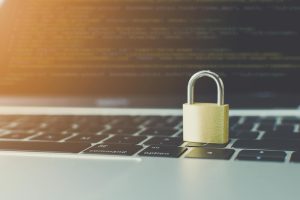Today’s IT professionals face a constant barrage of attacks from threat actors. Charged with protecting networks, servers and staff workstations, they must remain both proactive and well informed. The following are some practical guidelines that can be useful to minimise infection risks from unwanted spyware and viruses.
1. Installing high-quality antivirus and anti-spyware apps
Users often mistakenly believe that anti-virus applications that are free to download will supply sufficient defence for their devices from harmful spyware and viruses. Unfortunately, free software will typically offer less than adequate protection.
A professionally produced, business-grade anti-virus should always be employed. Not only do these programs run updates more frequently, they also defend against a broader spectrum of threats and deliver additional protective capabilities.
Similarly, a single antivirus app that comes equipped with integrated spyware will not deliver sufficient protection, nor will employing anti-spyware programs that are free to download. Free anti-spyware apps will commonly lack the capability to deliver real-time protection from Trojan, adware and other forms of spyware infection. Although many free apps can detect spyware after infection, officially licensed programs are usually required to prevent or remove infections that have taken root.
2. Keeping your applications up to date
Anti-spyware and antivirus programs will need regular database and signature updates. Without these vital updates, these protective programs are incapable of defending devices. All protective applications must be kept up to date, with measures taken to prevent any chance of license expiration. This will ensure anti-spyware and anti-malware programs remain current and continue to provide adequate protection.
3. Running daily scans
It is possible for spyware and virus threats to occasionally evade a system’s defences and start an infection. The extreme volume of new threats makes it inevitable that some infections, especially those designed by inventive threat actors, will outsmart your security software. These infections can also take root when a user inadvertently clicks on a malicious link or downloads a dangerous attachment. To combat these threats that slip through the net, use daily scans that check all of your system’s hard drive for added protection.
4. Thinking before you click
Time and again, security experts remind users to think before they click on attachments and links, but, despite this, everyone has the potential be fooled.
Regardless of whether users are hoodwinked by a cunningly crafted message or simply distracted, many let their guard down and click on links without being mindful of their origins. The consequences can be catastrophic, with operating systems corrupted and infections spreading through networks and destroying crucial data.
Email attachments should always be scanned before opening with a business-grade application for anti-malware. Links should never be activated directly from the body of an email – instead, users should open a secure browser and navigate manually to websites indicated in the message.
The secure desktop from Galaxkey has been built to support IT professionals in securing their systems. Offering a user-friendly approach to cybersecurity, with a range of robust features including three-layer encryption, our system is fully supported and easy to adopt. Contact us today for a free online demonstration.



